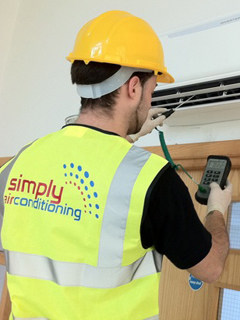 Here is a simple explanation how an air conditioning system works and the major component parts. Often when you are considering purchasing air conditioning, it is difficult to know where to begin. We hope with our articles we are assisting you to gain knowledge and learn something more about equipment we take for granted yet these days could not live without if you consider the wider impact.
Here is a simple explanation how an air conditioning system works and the major component parts. Often when you are considering purchasing air conditioning, it is difficult to know where to begin. We hope with our articles we are assisting you to gain knowledge and learn something more about equipment we take for granted yet these days could not live without if you consider the wider impact.
We have included heat pumps in this article too as combined systems are what many people opt for as they can have year round climate control. The function of each component is described:
- 1. An air conditioning or heat pump compressor compresses low-pressure refrigerant gas into a high pressure, high temperature gas. Usually the compressor is in the outdoor portion of an air conditioning or heat pump system.
- 2. The air conditioner or heat pump compressor unit is a high-pressure pump driven by an electric motor. The air conditioning compressor is packaged in the outdoor compressor/condenser unit.
- 3. A condenser or condensing unit is typically a condensing coil inside which high temperature high-pressure refrigerant gas flows, and over which a fan blows air to cool the refrigerant gas back to a liquid state (thus transferring heat from the refrigerant gas to the air being blown by the fan). The condenser unit is a coil of finned tubing and a fan to blow air across the coil. Usually the condenser unit is in the outdoor portion of an air conditioning system, often packaged along with the compressor motor discussed above.
- 4. The change of state of the refrigerant, from hot high-pressure gas to a liquid releases heat, including heat collected inside the building to the outside.
- 5. A metering device, which dispenses liquid refrigerant into an evaporator coil. The metering device may be simply a thin section of tubing (a capillary or “cap” tube). It may also be a more sophisticated thermostatic expansion valve (TEV) which includes a temperature sensing control that can open and shut the device against refrigerant flow.
- 6. An evaporator coil or cooling coil: Typically, the cooling coil is a section of finned tubing (it looks a lot like a car radiator) into which liquid refrigerant is metered and permitted to evaporate from liquid to gas state inside the coil. This state change of the refrigerant, from liquid to gas, absorbs heat, cooling the evaporator coil surface and thus cooling indoor air blown across the cooling coil. Usually the cooling coil is located inside the air handler.
- 7. An air handler and blower unit, which provides a fan to blow building air across or through the evaporator coil. The air handler blower fan unit moves building air across the evaporator coil surface in order to condition building air by cooling it (and thus also by removing moisture from the cooled air).
- 8. A duct system which distributes conditioned air from the air handler in to the occupied space (supply ducts), and which takes air from the occupied space and returns it to the cooling system air handler.
Heat Pump Systems use the same components described above, with the addition of a reversing valve that allows the system to run “backwards” in cold weather. Therefore, in air conditioning mode the heat pump is moving heat from inside the building to outdoors while in heating mode the heat pump is moving heat from outdoor air (or water in some designs) to the building interior.

No comments yet.